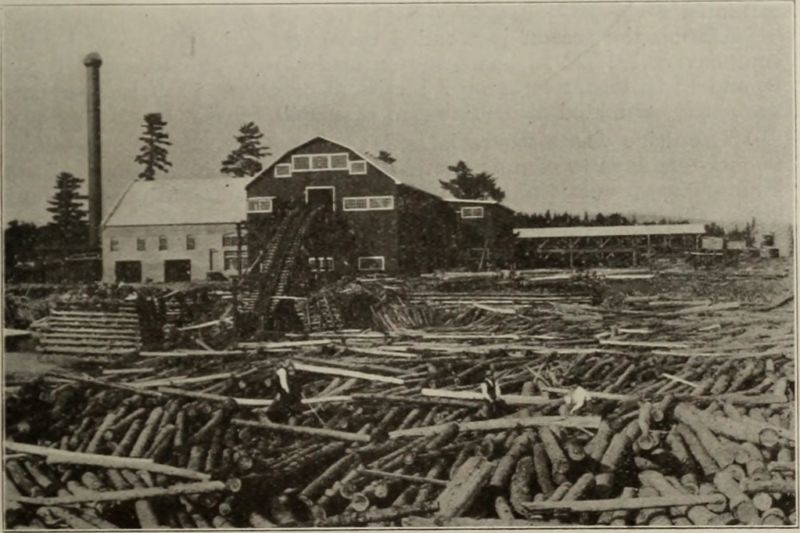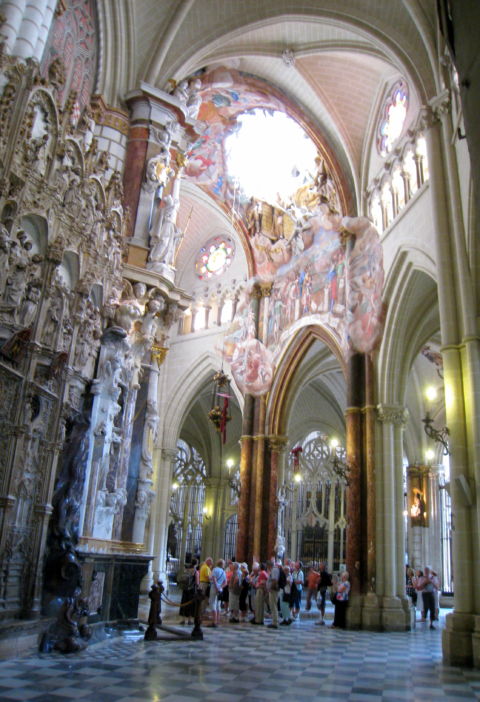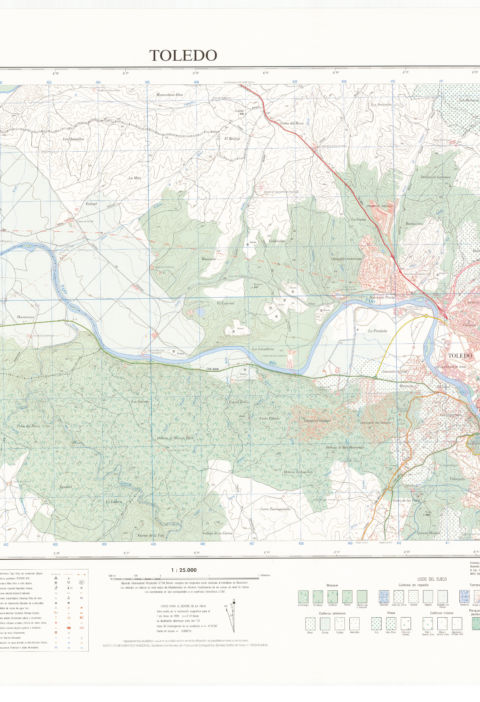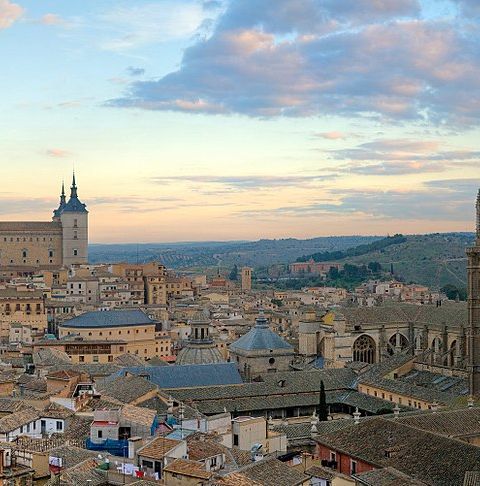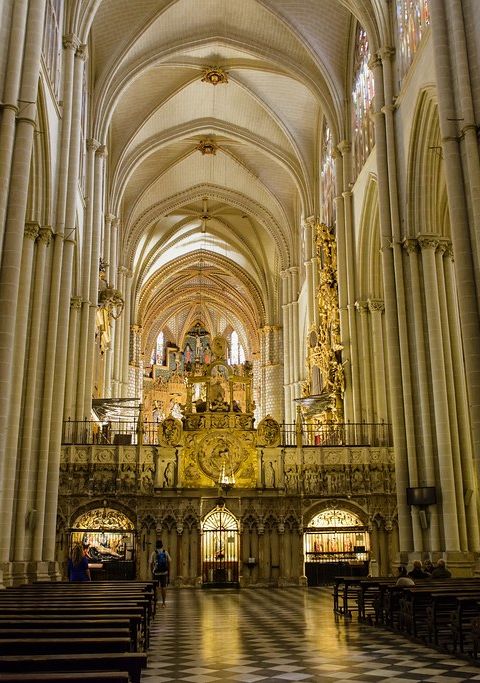In Toledo, a shed is a construction at a certain height, which serves to communicate two buildings. Centuries ago it was a way to avoid going out into the street, but they were banned in the time of Juana I of Castile, many of them disappearing. We will tell you where to locate the ones that are left. These are the sheds of Toledo.
Imagine the streets of Toledo in a cold winter night, darkness and fog… You walk aimlessly looking for the famous sheds of Toledo, in solitude. You won’t find a soul, although the memory of the many that have inhabited the ancient city is felt in the stones. You turn a corner and the image is overwhelming. It looks like a journey back in time to the 15th or 16th century. A faint light illuminates a high passageway that connects two buildings, on the narrow street. It is the shed of Santo Domingo el Real, dimly lit. Just a modern red traffic light breaks the magic and feeling of being in the 21st century (that’s something the City Council should solve)
 Shed of Santo Domingo el Real, in Toledo, during the night
Shed of Santo Domingo el Real, in Toledo, during the night
You expect to see some cloaked knight and a sword shining in the scant light of the night appear far below the shed… Or a knight on the way from a distant battle to liberate the lands of the south…
 Photo: Eduardo Salas (see web)
Photo: Eduardo Salas (see web)
They are the magical sheds of Toledo. Old constructions that join two buildings belonging to the same property, to avoid that their owners have to go out to the street. It was common for them to join the possessions of a convent (which grew by donations made by powerful nobles of adjoining houses as a dowry or donation, for example so that their daughters could enter the Convent)
.
It is also necessary to differentiate between shed and passageway. A shed in Toledo is usually not just a “passage” between two buildings, as they are sometimes very large and contain rooms or more rooms, gaining private land to the public (the street that passes underneath) given the scarcity of land in the old town. Also in Toledo there are passages built in height that communicate two buildings, being a simple corridor more or less wide, like the one of the photo that joins the Archbishop’s Palace with the Cathedral, the “arch of palace” :
 Interior of the palace arch of Toledo Cathedral.
Interior of the palace arch of Toledo Cathedral.
Index of Contents
A little bit of history about the Toledo sheds
It was Queen Juana I of Castile (La Loca) around 1509 who decided to prohibit the proliferation of these sheds, as it was leaving many streets of Toledo without daylight (and less nightlight), in addition to the serious health conditions they caused, with the accumulation of waste (imagine the terrible smell). Also for the possibilities of refuge and ambush place for the malefactors who lurked in these dark corners of the city.
When building a shed, it was necessary to do it “at such a height that the cavalier can pass over it with his weapons”
.
Izquierdo Benito, Ricardo (1996): “La Escuela de Traductores de Toledo”.
A little later in that century, a corregidor ordinance set the minimum height the sheds should have, being that of a knight ridden with his weapons. Thus, the owners who did not reach these measures, had to demolish or raise their sheds. In some cases, such as the Santa Clara shed, it was lowered, chopping the rock to comply with the regulations (see note at the end of this article)
.
 Photo sheds of Toledo. Eduardo Salas (visit his website)
Photo sheds of Toledo. Eduardo Salas (visit his website)
These sheds used to have images or crosses with lanterns to give a bit of company to places so unclear, about which the romantics of the nineteenth century were remarkably interested. (” La Casa Toledana” RABACHT, 62-63)
I’m sure you’re also interested: This street is in Toledo
We will briefly detail below the few sheds that can be visited in Toledo:
Shed of Santo Domingo el Real
 Shed of Santo Domingo el Real.
Shed of Santo Domingo el Real.
Actually this shed belongs to the convent of Santa Clara, but the street is known as belonging to Santo Domingo el Real, which is the convent founded in 1364 with license from Pedro I “the Cruel”. It is the longest shed of those that remain and at night it is an authentic experience to walk, in solitude, through these streets.
Shed of Santa Clara
 Shed of Santa Clara in Toledo. Toledospain
Shed of Santa Clara in Toledo. Toledospain
In this case the passageway belonged to the palace of the Rivera, lords of Valdepusa and Malpica. It did not belong, as is thought, to the convent of Santa Clara. It is here where you can see the lower part to which the street was subjected, chopping the stone probably made around 1568, to facilitate the passage under the shed and to derive rainwater.
Shed of Saint Peter Martyr
 Shed of San Pedro Mártir (Toledo) by Toledospain
Shed of San Pedro Mártir (Toledo) by Toledospain
It is in the street of the same name, being one of the accesses to the university building known as San Pedro Mártir. It already existed, according to Porres in his History of the Streets of Toledo, around 1694, in which a lamp is endowed in it to illuminate an image of the Virgin of Solitude that, apparently, was there. The current shed is more modern, built in 1740 near the porter’s lodge of what used to be the monastery. It is divided into two parts, the second being from 1751.
Maid’s Shelter
 Shed of Doncellas (Toledo)
Shed of Doncellas (Toledo)
Old shed that goes down to the College of Noble Maidens, founded in 1551 by Cardinal Siliceo, destined to form future mothers. The shed belongs to the house that in 1780 belonged to the Marquis of Villagarcía, Count of Torrejón. It has threatened ruin on several occasions since ancient times and almost collapsed in 1854, according to Julio Porres, but remained standing. It is one of the few remaining sheds that join civil buildings. A little further down, in this same street, we find a metal passage that joins the Colegio de Doncellas with a building that today belongs to the regional administration.

